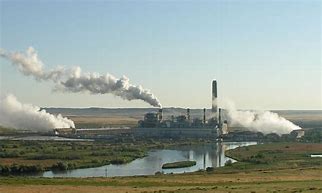-
New US bill would see carbon dioxide utilisation receive equal tax credits as for sequestration
Date posted:
-
-
-
Post Author
Patrick LaveryCombustion Industry News Editor
-
-

A bipartisan initiative to align the economic incentives for carbon dioxide sequestration and utilisation has been launched in the USA, through a bill called the Captured Carbon Utilization Parity Act. The bill, sponsored by Democrat Senator Sheldon Whitehouse and Republican Senator Bill Cassidy, proposes to increase the per (metric) tonne value for carbon dioxide captured through direct air capture and then utilised to US$180, while increasing the value for capture and utilisation in the power and industrial sectors to US$85/tonne.
These match the credits for sequestration currently available through the ‘45Q’ tax credit system, where for utilisation in the power and/or industrial sectors (and for enhanced oil recovery), the credit is US$60/tonne , and US$130/tonne from direct air capture. In making the changes, the sponsors argue that the bill would increase the use of carbon dioxide and thus promote a more circular economy. They also suggest that it could contribute to “reduc[ing] current annual global CO2 emissions by up to 10 percent, including by addressing the industrial sector that accounts for 24 percent of U.S. greenhouse gas emissions.”
A figure of 10% of global CO2 emissions seems a stretch, yet some analysis shows it could well be justified, depending on how it is interpreted. According to data cited by the European Union, the United States was responsible for 12.55% of global carbon dioxide emissions in 2021, and the US Environmental Protection Agency’s breakdown of CO2 emissions for 2020 shows that 27% was in transportation, 13% from buildings, and 11% from agriculture – more than half from sectors which would struggle to be captured by projects at present.
Moreover, even if capture was installed on all industrial and power sources of CO2, it would likely be averting around 95% of point source emissions. This suggests a figure of more like 6% if all power and industrial sources had carbon capture and/or utilisation (if it is assumed the sponsors include carbon capture and storage as well as carbon capture and utilisation in their reckoning). Electrification of transport and buildings may change the portion of national emissions that could be captured over time, and direct air capture would be ‘negative’ emissions that would cover some portion of residual emissions, so the net total may push more towards 10% of global emissions, theoretically.
In practice, for the first decade at least, that is likely to be far lower should the bill pass. However, if one was to consider the development of carbon capture, storage and utilisation technology through deployment in the US, and the subsequent reduction in cost per captured/utilised tonne of carbon dioxide, its increased deployment outside of the US could mean the 10% figure is far exceeded on a global basis.
